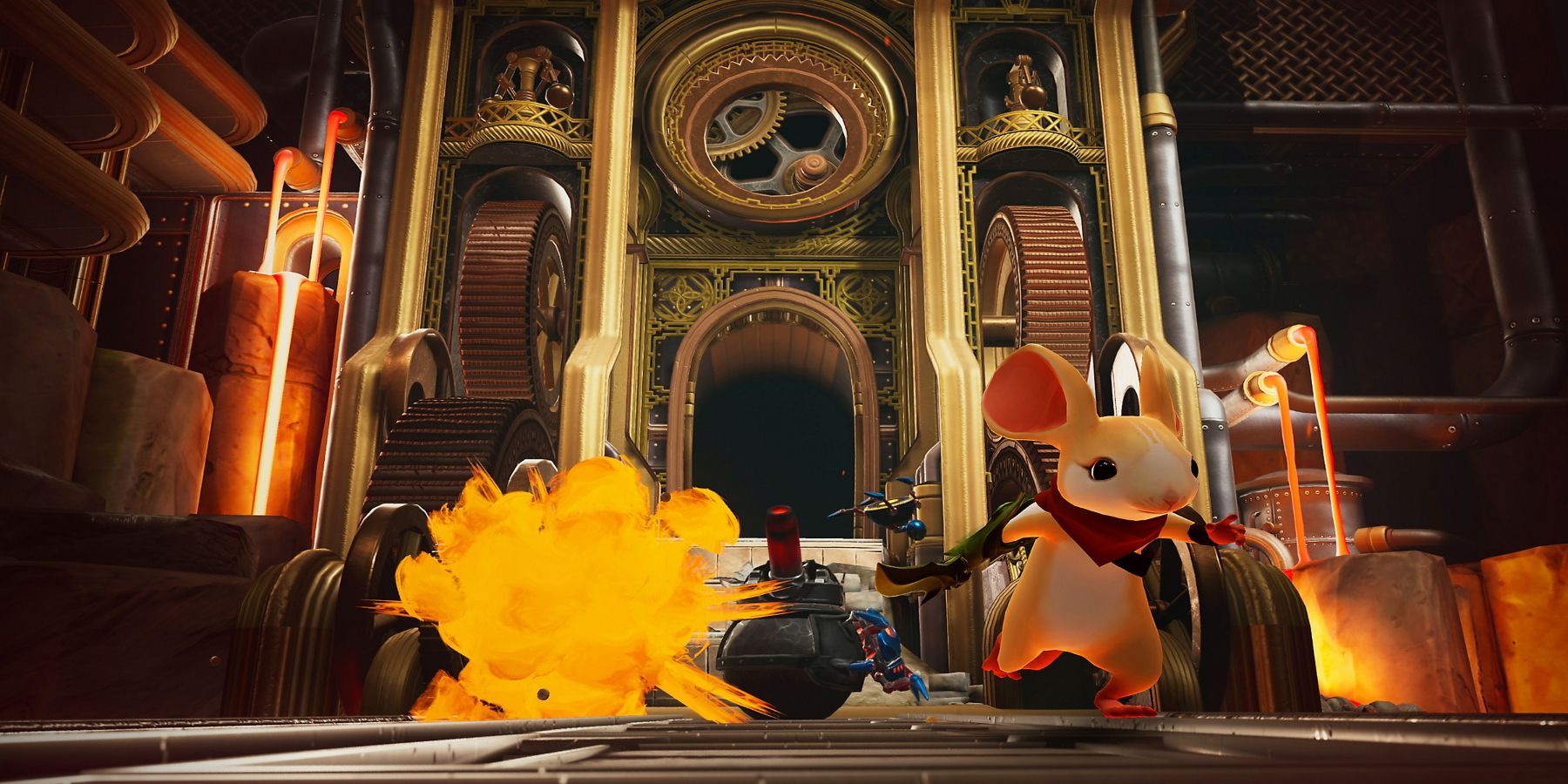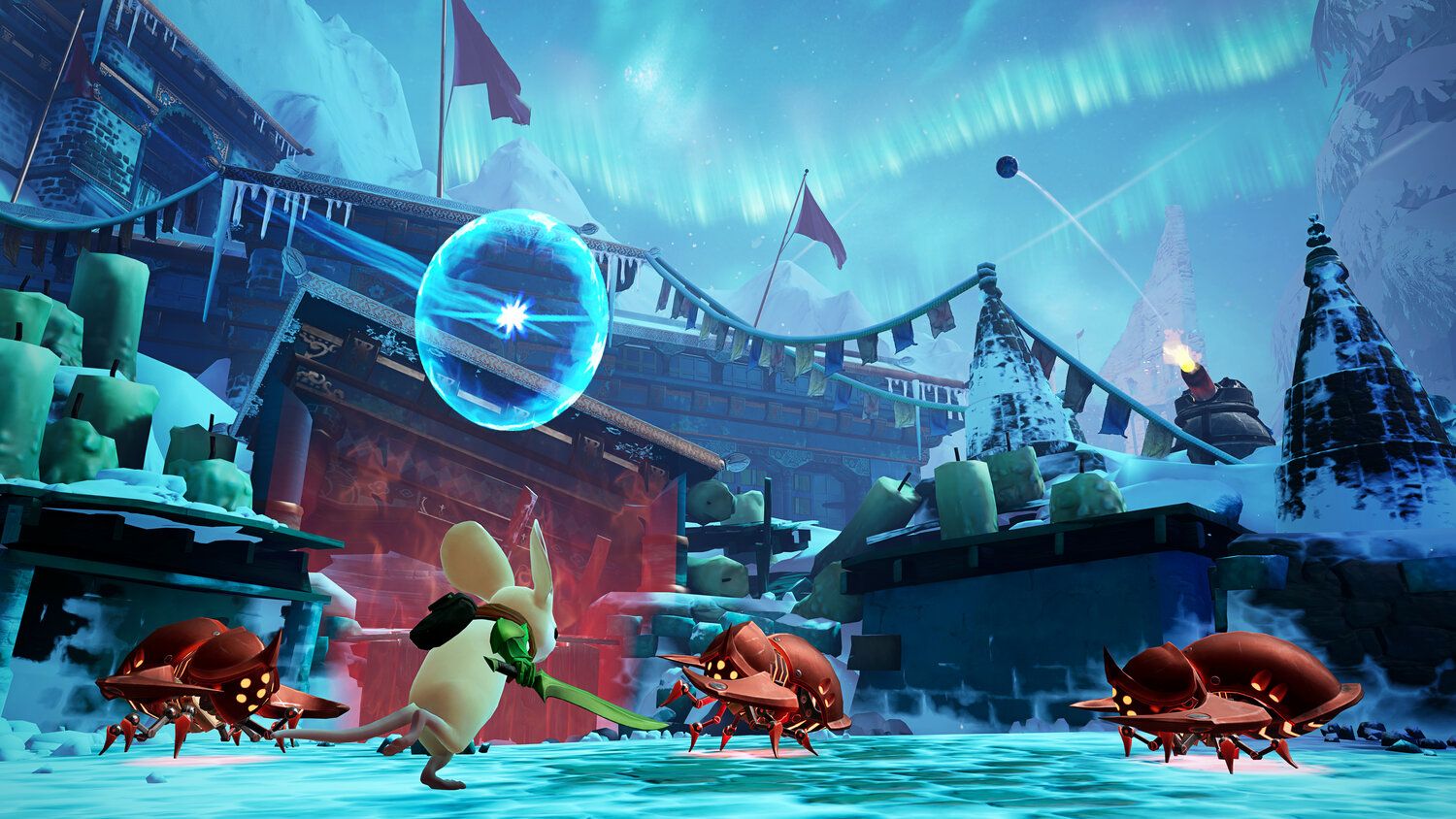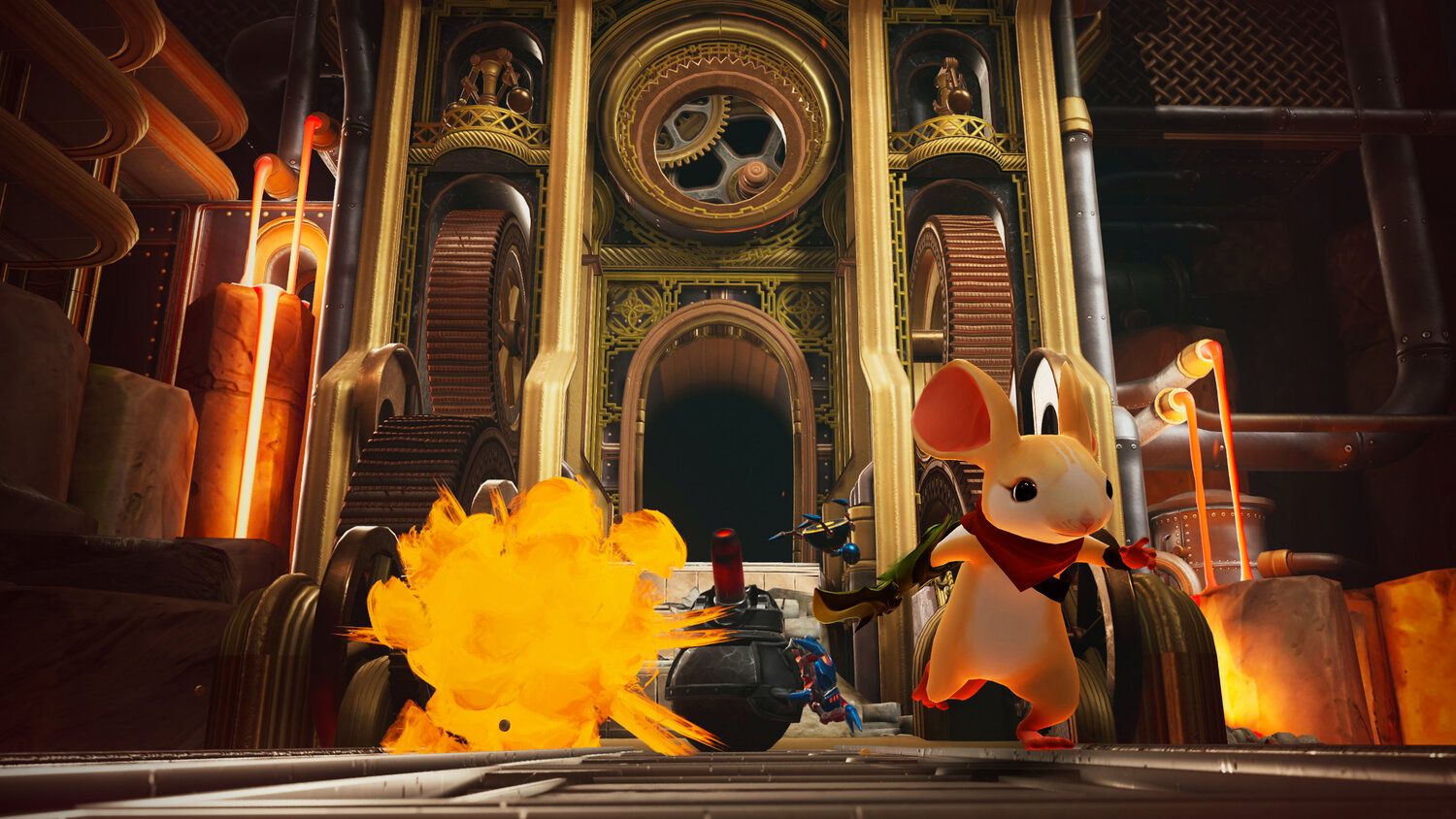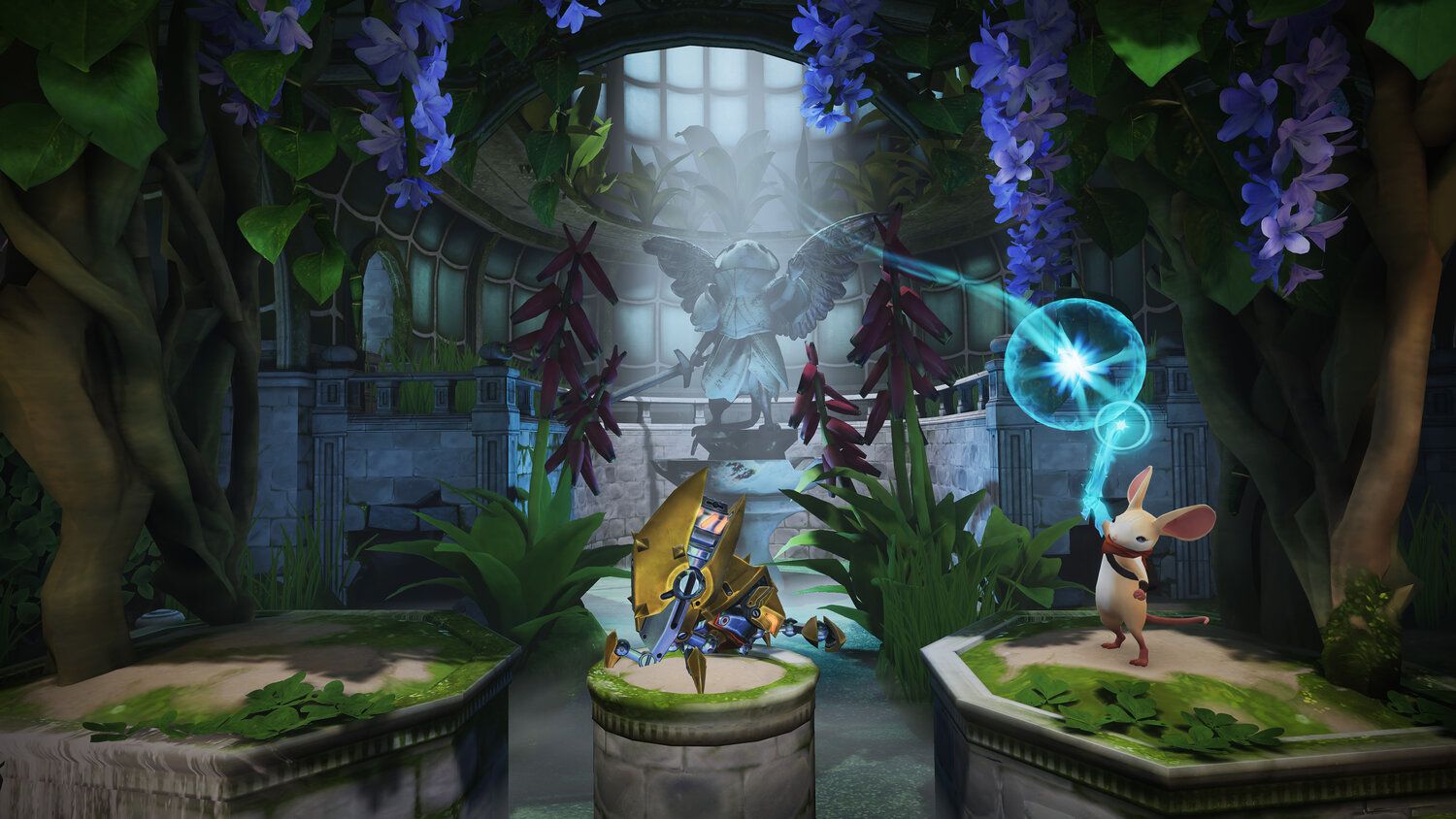Moss: Book 2 is the follow-up to 2018's puzzle-platformer that was initially a PSVR exclusive. It's a charming and visually impressive game where players control a cute mouse named Quill that starts off with a sword. Unlike most traditional PSVR titles, Moss is played using the DualShock 4 controller with the VR headset instead of the antiquated Move Motion Controllers. Quill is controlled normally, but players have a zoomed-out isometric view of Quill and the various environments in this medieval fantasy world.
While it can be a bit blurry at times due to the not-so-powerful specs of the original PSVR headset, Moss: Book 2 still stands out due to the amount of detail in its environments and level design. Quill will go through these puzzle rooms that are essentially tiny dioramas, and players can move their heads around to get a peek at small spaces or to just have a look at the surrounding objects and nature. Being in a fantasy world, players will see intricate castles, lush forests teeming with foliage, decrepit caves, and even a coal and lava-filled factory.
About 80% of Moss: Book 2's six-hour length is spent solving puzzles, ranging from just pulling/pushing blocks and light platforming to more intricate gravity-defying stunts. Most of the puzzles fall into the former, being pretty simple and straightforward.
However, there are times when Moss' puzzles can rack one's brain, especially when players gain access to the rest of Quill's arsenal of weapons. She does start out with a sword, which is mainly used to attack enemies at certain times, but later on, players can charge the weapon and use it to quickly dash over long distances, which is way more interesting when used for solving puzzles, and less for combat scenarios. She also gains access to a chakram and a hammer, which can also be charged to perform special maneuvers, opening up the floor for more multi-step puzzles and varied combat.
Switching between these weapons can be slightly annoying; instead of just pressing a button to rotate them out, players have to press the touchpad on the controller to open up the inventory, and then drag the weapon to Quill using the controller's motion. Quill can sometimes be far from the player's view, making it difficult to physically reach out to her.
For tinier rooms, it's easier to reach Quill, but some larger locations in the game can make it difficult to interact with her and other moveable objects. It's a game that's fine to play sitting down, but players might need more space to interact with everything and not bump into real-world stuff.
As mentioned before, there is some combat in Moss: Book 2, but it's mostly straightforward engagements, especially when Quill only has a sword in the first couple of hours. Players can slash their sword to attack these bug-like enemies, and they mostly go down without much of a fight. There is a dodge mechanic, too, allowing Quill to dash out of the way of attacks quickly, but players shouldn't find themselves dying too often, unless they're not paying attention to what's going on.
However, the game's difficulty picks up quite a bit towards the back half. Once Quill has the sword, hammer, and chakram, different enemy types will appear, and this is where the weapon switching comes into play. There are bugs that need their armor broken with the hammer before Quill gets in there with a regular attack. But besides that, the regular encounters aren't that varied.
The boss fights make Moss: Book 2's combat shine, as they tend to utilize the VR headset and motion controls in really fun and engaging ways. There aren't many boss fights in Moss: Book 2, as it's mostly exploration and puzzle-focused, but they are some of the best moments in the game, and are really cinematic. For example, one of the boss fights takes place in a clock tower, and players need to physically pull down a church bell to make the boss fly into it, and it feels satisfying to pull off.
And since players are looking at this world through the perspective of a tiny mouse, the bosses look huge and epic, and the backgrounds are eye-catching. At times, it can even feel that Moss: Book 2 is a nature tour of sorts, letting players gawk at the depth and detail of the world that Quill is exploring - everything is just gorgeous.
As far as the story for Moss: Book 2 goes, there's definitely a solid framework that might tug at the heartstrings a bit, especially with how the game ends, but ultimately, it wasn't a memorable experience. Instead of having engaging cutscenes during gameplay, most of the game's critical plot points are told with a fantasy storybook with static images on each page that players turn with the motion of the DualShock. It's a charming way to tell a story, but having the story take a more hands-on approach would have been much appreciated to pull players in just a little more.
Sometimes it feels that Moss: Book 2 would still be a fine game if it had a non-VR mode for those that just want to experience the game without the slightly annoying motion mechanics, but, for the most part, the added immersion works well. The puzzles are enjoyable and have just enough challenge without making players beat their heads against a wall. Quill is such a likable and adorable main character. The boss fights are spectacles and take advantage of PSVR's headset, and the environments are too pretty to not stare at every few minutes.
While there are other PSVR games that players should check out first if they just picked up the headset for the first time, Moss: Book 2 is still a quality puzzle platformer that can be finished in just a few short hours, providing folks with light puzzle-solving and a pretty emotional adventure.
Moss: Book 2 is out now for PSVR. Game Rant was provided a code for the purposes of this review.




